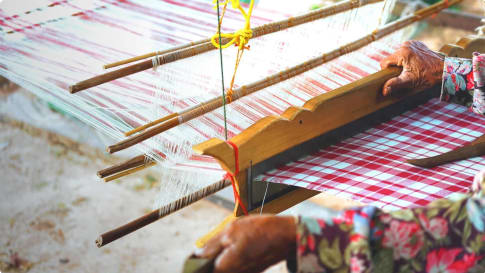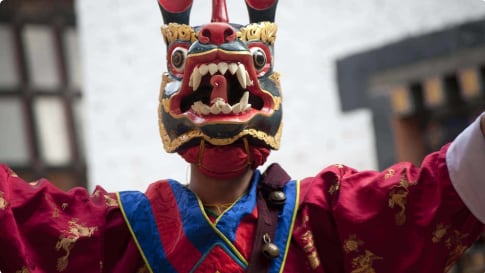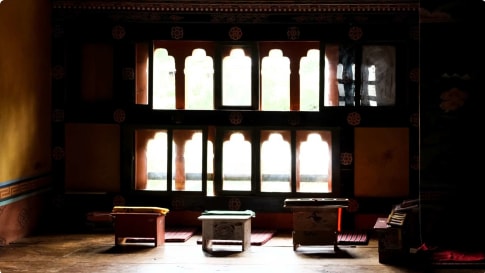Destination: Bhutan
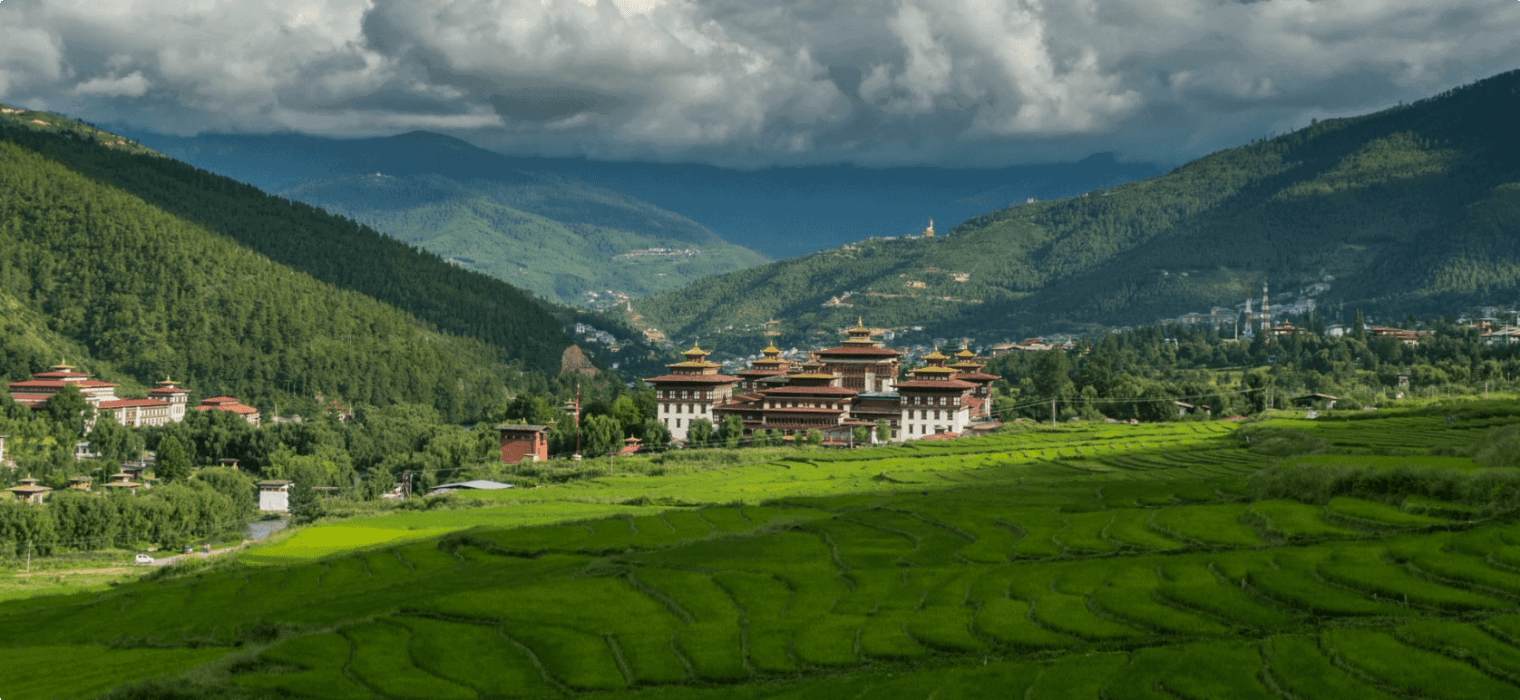
Bhutan tours for seniors
In Bhutan it is said that they care more about their GNH (Gross National Happiness) than their GDP (Gross Domestic Product) – and it shows. The tiny Buddhist nation tucked between India and China has continually been ranked as the happiest country in Asia.
It’s easy to see why. The last great Himalayan kingdom, which only opened its doors to visitors in the 1970s, is home to magnificent landscapes, from verdant green valleys and dramatic mountain ranges to fairytale-like forests and storybook villages. Buddhism is central to Bhutanese culture and many people live a life close to nature that enhances wellbeing. Part of the reason nature is so well-preserved in this tiny country is because of a focus on the environment. By law, at least 60% of the country’s forests must remain intact for future generations. For this reason, the landscape is close to pristine, with breathtaking forest hikes and vibrant flora and fauna.
Bhutan Tours
Tours for Mature Aged and Senior World Travellers.
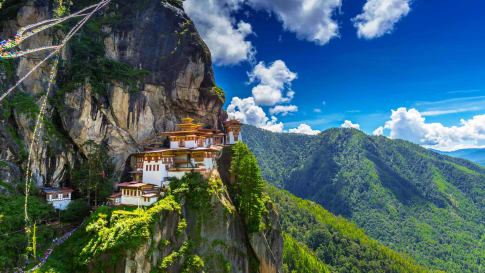
14 days
Nov, AprTour of Darjeeling, Sikkim, and Bhutan
Visiting Bhutan, India
Join Odyssey Traveller on this small group tour in the Indian subcontinent, taking us from the verdant tea gardens of Darjeeling nestled in the Himalayan mountain range, to the hilltop monasteries of the former independent kingdom of Sikkim, and finally to the pristine and beautifully isolated mountain landscape of Bhutan.
From A$12,325 AUD
View Tour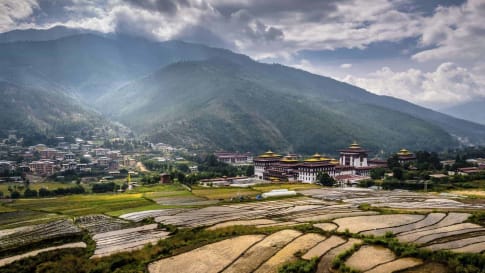
17 days
Sep, AprBhutan | Small Group Cultural Tour
Visiting Bhutan
An unhurried ocean of calm in a crowded continent, Bhutan is scenically magnificent. Join our small group escorted tour and walk up the mountain to the famous Tiger's Nest monastery. The Bhutanese will welcome you to share their distinctive culture, unpolluted environment, and colourful festivals.We explore centuries of Buddhist tradition inherited from Tibet that have shaped this land with art, dance, music, and even medicine shaped by religion.
From A$12,995 AUD
View TourBhutan has preserved its traditional culture as well as it has its beautiful scenery. Delve into traditional arts and handicrafts at the Institute for Zorig Chusum, and take in history at the National Museum of Bhutan. Unlike other parts of the world, however, traditional Bhutanese culture does not just reside in museums. Prayer flags and stunning monasteries dot the landscape while annual religious festivals (known as tshechu) are a living form of art and an enduring expression of culture, the social highlight of the Bhutanese calendar.
Articles about Bhutan

Tiger's Nest Monastery, Bhutan
The Tiger's Nest monastery, known locally as Paro Taktsang, has earned a reputation as one of the most remarkable tourist spots in central Asia. It has become the most iconic cultural landmark in Bhutan, and a trip to the country is incomplete without a visit.
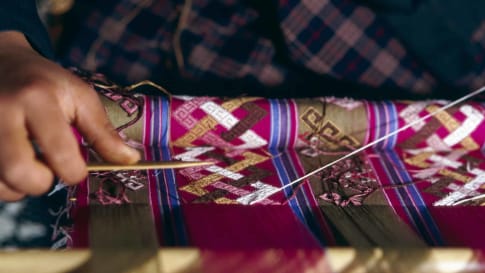
The National Textile Museum of Bhutan
Over the past decade, the Bhutan Textile Museum in Thimphu has steadily established itself as one of the best adverts for local Bhutanese culture. The museum finds the right balance between past and present, highlighting some of the old Bhutanese textile masterpieces, whilst simultaneously promoting the wares of local artisan weavers. In doing so, the Bhutan Textile Museum has succeeded in shining the spotlight back towards an amazing but dying skill. Bhutanese weavers can now continue the practices of their forefathers, without worrying as much about competition in a consumer world governed by mass-production and strict bottom lines.
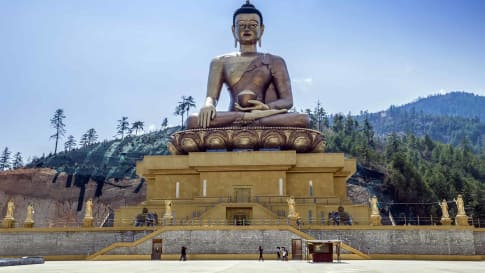
Bhutanese Temples
Modern day Bhutan has a deep affinity with its Buddhist past. Buddhism is the source of religious and cultural identity for the majority of Bhutanese people. The history of Bhutan goes some way to explaining why, in the upper ranges of the Himalayas, nationalism intertwined so tightly with religion.
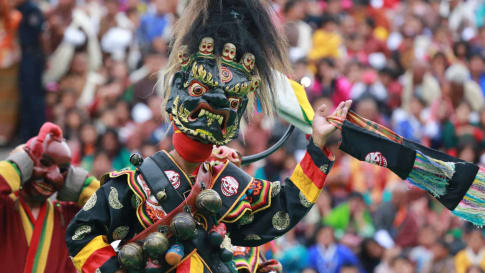
Bhutan's Nalakhar Tshechu festival
The Nalakhar Tshechu festival runs for three days in the Nalakhar village in Bumthang. The celebration is part of the national Tshechu, one of Tibet's biggest religious festivals, which runs for three days throughout the country.
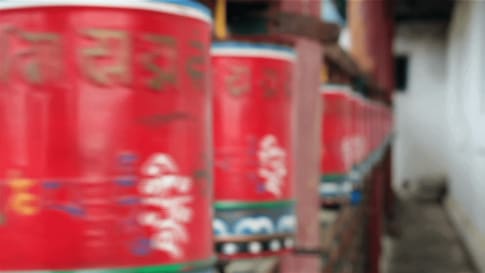
Bhutan the Hidden Kingdom: The Definitive Guide for Travellers
Bhutan: a journey into the Hidden Kingdom Bhutan, a tiny and remote nation nestled within the Himalayas, has been described as a real-life Shangri-La. It is famed for its Buddhist spirituality, pristine mountain landscape, and…
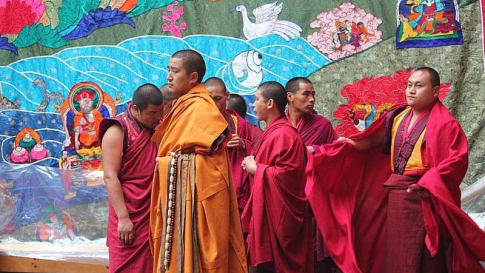
Festivals of Bhutan: The Definitive Guide
Festivals of Bhutan Tshechu, or religious festivals are at the very heart of Bhutan‘s unique way of life. These sacred festivals take place all year round – in every monastery and temple, even in the…
Touring Bhutan
The need to know
Getting around
Odyssey travels by coach and occasionally uses local transport, including trains and ferries. Specifics are always outlined in your tour itinerary. Bhutan has a limited domestic air service but no passenger rail. Bigger cities are serviced by taxis (though they do not operate to a metre). Bhutan’s one main road is the National Highway, and it is narrow and winding. But the best way to experience Bhutan is by road, because you can come so close to mountains and feel immersed in its rugged landscape.
Accommodation
In major cities, Odyssey stays in centrally located 4-5 star hotels, with access to public transport where available. In smaller towns or rural areas, we usually stay in family-run hotels or guesthouses. On our long stay tours, during which you spend the length of the tour in a single location, we use serviced apartments.
Tour Guides
Odyssey always engages local guides with regional knowledge to ensure an authentic experience during which you can learn as much as possible about the history and culture of places you visit.
Geography Weather & environment
Bhutan is nestled in the eastern Himalayas between China in the north and India to the south, east and west. The altitude varies from 180m (590ft) in the southern foothills to over 7,300m (23,950ft) in the north. Bhutan has three distinct climatic regions. Due to Bhutan’s location and unique geographical and climatic variations, it is one of the world’s last remaining biodiversity hotspots.
Bhutan’s pristine environment, with high rugged mountains and deep valleys, offers ecosystems that are both rich and diverse. Conservation of its rich biodiversity is one of the government’s development paradigms. The government has enacted a law that shall maintain at least 60% of its forest cover for all time.
World Heritage sites
As yet, no sites in Bhutan are officially inscribed on the World Heritage List. However, there are a number of Tentative sites that are well worth visiting. These include:
The Ancient Ruin of Drukgyel Dzon, which is situated on the ridge of the upper Paro valley. Constructed in 1649, it was originally a defense base. After being destroyed by fire in 1951, its’ ruin remains an integral symbol in Bhutan’s heritage
Tamzhing Monastery is known for its unique mural paintings and other cultural artifacts. The monastery is the principle seat of Pema Lingpa, who built it in 1501.
Royal Manas National Park is one of ten global biodiversity hotspots. Located in south central Bhutan, it includes tropical and subtropical ecosystems, grassland and river beds. Thus, it is home to a great variety of wildlife. It also has the world’s highest tiger density!
Festivals & events
The Thimphu Tshechu is one of Bhutan’s biggest festivals. It takes place over three days in September, which are designated national holidays. People wear their finest garments and pack into the courtyard of the Tashichho dzong (fortress). Mask dances are performed upon a specially installed dancing stage.
In March, in the spring, Paro Tshechu takes place. This popular festival sees monks and locals dress up in vibrant, brocade costumes. They reenact Buddhist legends, wearing masks that represent deities. The festival culminates with the viewing of the four storey high, 350 years old thangkha (Buddhist religious scroll), celebrating the deeds of Guru Rimpoche.
Jambay Lhakhang Drup occurs in October. Guru Rimpoche is celebrated with traditional dances, as people also mark the establishment of the Jambay Lhakhang Monastery. The highlight is the fire ceremony, or Mewang. Locals run beneath a large flaming gate made from dry grasses.
Another notable event within Jambay Lhakhang is the Tercham, or Dance of Treasure. Traditionally, masked dancers perform naked in the middle of the night. They believe this dance will bless infertile women so that they may bear children.
Reading lists
- The Dragon’s Voice: How Modern Media Found Bhutan by Bunty Avieson
- Samu-Shamu, The Sonam Stories: Narratives of Childhood in Bhutan by Suzie Sims-Fletcher
- The History of Bhutan by Karma Phuntsho
- A Splendid Isolation: Lessons on Happiness from the Kingdom of Bhutan by Madeline Drexler
Eating & Drinking
Bhutan’s unofficial national dish is Ema Datschi. This spicy stew is similar to a curry, and is often eaten daily accompanied by red rice. Ema Batschi is made of chillies and cheese from yak or cow’s milk. Taste with caution – Bhutanese chillies are hot!
Other classic stews include Jasha Maroo, which is a spicy, diced chicken with tomato, coriander and ginger, served bathed with a chicken broth; and Phaksha Paa, simmered pork shoulder and spices topped with dried pork and fresh chilli.
Momos are perhaps the most familiar choice for the Western palate. They are similar to Chinese dumplings: steamed buns typically filled with minced meat, cabbage and spices
Health & Safety
While much of Bhutan is usually safe to travel around, it’s important to stay alert to anything unusual. Also, you will often see signs warning of pickpockets in areas popular with tourists, so it’s important to keep a close eye on your belongings at all times.
Electrical supply
Whenever you travel overseas, it’s always wise to take an appropriate travel adaptor. The electricity supply runs at 230V, 50Hz. Bhutan accepts plugs of Types C, D, F, G and M.
The Best of Bhutan
Highlights
National textile museum
The extraordinarily distinctive woven fabrics and other treasures in markets and at the National Textile Museum.
Read MoreThe Nalakhar Tsechu festival
Nalakhar Tsechu, a colourful village festival featuring Bhutan’s famous sacred masked dance performers.
Read MoreTemples of significance
Chimi Lhakang, a popular fertility temple honouring the “Divine Madman,” religious folk-hero Drukpa Kinley.
Read MoreTour Reviews
I wish to sincerely thank Len for his amazing care, good cheer and flexibility ! Len has that great combination of simultaneous organisation and flexibility, which is so very necessary on a small trip such as this. In his stride, he was able to re-design the program at short notice due to weather conditions (working closely with Drakpa) and the end result was better than the original plan in my opinion!!! It was clear from day one, that Len cared and payed attention to each and every one of us at every step of the way – going out of his way to assist those who needed it. The trust and camaraderie we developed with Len made the trip that much more special! I miss our laughs.
Participant March 2017
Bhutan | Small Group Cultural Tour
The local guide, Drukpa, was exceptional value. When I was ill for a couple of days his care for me, assisted by Len, was way beyond my expectation.
Participant March 2017
Bhutan | Small Group Cultural Tour
The trip to the Tang valley and the Ogyencholing museum were a highlight. Beautiful scenery, wonderful people and one of the best museums I've seen. That night and all next day it snowed - what a buzz. Made everything look magical and improved the scenery for the next few days
Participant March 2017
Bhutan | Small Group Cultural Tour
Loved: National Institute of traditional medicine hike to Wanyditse Goemba Punakha festival – definitely a highlight Hanging the prayer flags at the pass! The outdoor picnics! Archery competition! Dumtse Lhakhang – went to heaven!!! Dzong Drak Kha (mini tigers nest) amazing views and climb Sanga Choekor Shedra (Bhuddist College) Drakpa and his team (Nima and Karma) were just amazing. Drakpa was very knowledgeable, friendly, caring and cheerful. He went out of his way to provide us with information and experiences to help our understanding of the culture and religion, he was funny and entertaining and very professional under pressure.Nima was a very competent driver, and I have never felt in safer hands in the difficult driving conditions we were in.
Participant March 2017
Bhutan | Small Group Cultural Tour
FAQs
What is the time zone for Bhutan?
Bhutan’s time zone is GMT + 6 . Bhutan does not observe Daylight Savings time.
Is tipping customary in Bhutan?
If you’re on an Odyssey tour, we take care of tipping so you don’t need to give it a second thought. However, in your free time, or if travelling independently, it is recommended that you tip up to 15USD for guides and 6USD for drivers. Information on this custom varies, with some saying tipping is discretionary. Staff tend to earn low wages, so tips would be greatly appreciated.
What is internet access like?
Some hotels will provide wifi to their guests, and there are a few internet cafes in major towns. But on the whole, internet access cannot be relied upon. The networks are continually undergoing expansion.
Can I use my mobile in Bhutan?
Check with your cell phone provider to see whether you’re able to make calls and use data while in Bhutan. Many providers will offer a daily fee that allows you to make calls and check the internet while only being charged your regular rates. However, be certain to inform your provider that you’re heading overseas, because just like a bank they can turn off your service as a result of unusual activity.
Articles about Bhutan published by Odyssey Traveller:
Bhutan: A journey into the Hidden Kingdom.
For all the articles Odyssey Traveller has published for mature aged and senior travellers, click through on this link.
External articles to assist you on your visit to Bhutan:
Visit the world’s only carbon-neutral country.
Responsible Travel Tips for Bhutan
- If sightseeing in rural areas, remember to be respectful of residents and locals. As well as being tourist attractions, these are peoples’ homes!
- Learn at least the local greetings to break the ice. Although many locals speak English, the more you know of the native language, the greater your experience of the country will be.
- Carry a business card in your wallet or purse from your local hotel, to assist you with the return journey if you do become lost.
- Always ensure that you are covered by travel insurance. If you need advice on this feel free to contact Odyssey and we’ll be able to help.
- When travelling independently, make sure you check the opening hours of shops and museums so that you don’t miss out! Museums and galleries are often closed on Mondays. Also be certain to check whether your trip coincides with any public holidays, so you can plan accordingly.
- Consider contacting your bank to inform them that you may be making purchases overseas. Otherwise, they may flag any activity on your account as suspicious. Also, check which ATMs and banks are compatible with your cards, to ensure you can withdraw cash with minimal fees.
- Before departing, make sure you have a number of euros in a range of denominations. You don’t want to be carrying around enormous amounts of cash, but take enough to make it easy to pay in locations that might not accept credit card. It will also help you avoid card transaction fees, and it makes tipping a breeze.
